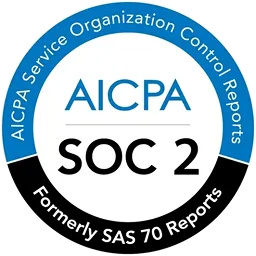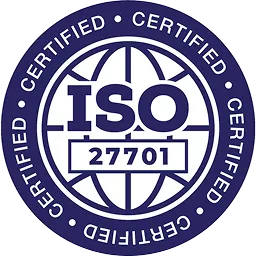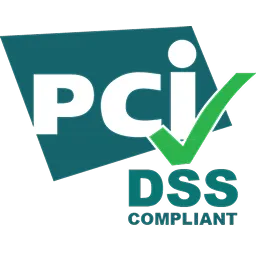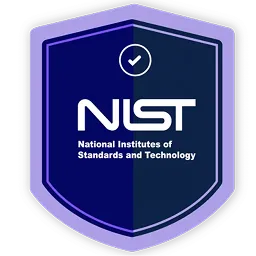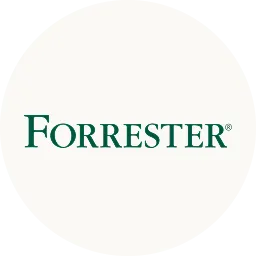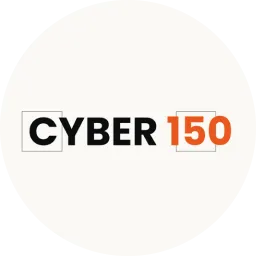Without a proper framework, it can be quite difficult to understand and address security risks (which can compromise the safety of an organization's critical assets). This is where the risk management framework (RMF) emerges as a solution. But what is RMF, and how exactly does it do that? In this article, we'll explore this framework in detail.
The risk management framework helps safeguard every aspect of business operations from potential threats. These threats include risks posed by poor security strategies, non-compliance with regulatory requirements, access gaps (mismanagement of access), and more. But what exactly is a risk management framework?
What Is A Risk Management Framework?
The Risk Management Framework (RMF) is a structured set of standards/rules designed to help identify, evaluate, and minimize risks to data systems. This framework also encourages your teams to consistently monitor new security risks, review ongoing strategies, and promptly address emerging issues.
By embracing this risk-based approach, organizations can enhance their initial risk plans and effectively respond to new challenges, safeguarding their information systems against changing threats.
However, to better understand how this framework functions, you need to familiarize yourself with its key components.
Risk Management Framework Key Components
Below are the 5 core components of the risk management framework:

1: Risk Identification
This involves identifying which organization assets are at risk of compromise and understanding how these threats could affect business objectives.
Note: Given the ever-changing nature of businesses, this process is ongoing and requires constant attention.
2: Risk Assessment
It evaluates the seriousness of potential security threats and prioritizes their impact (considers both financial and non-financial consequences). Organizations typically use a mix of quantitative and qualitative methods to rank security threats based on their severity.
3: Risk Mitigation
This component outlines strategies to eliminate or minimize identified risks. This may involve:
- Putting in place essential security controls
- Enhancing current security measures
- Following best practices to enhance risk management effectiveness
4: Risk Monitoring & Reporting
This involves consistently monitoring and evaluating the effectiveness of existing risk mitigation strategies and generating reports. These reports provide details on the current risk status and suggest adjustments for improving the current risk management approach.
Overall, monitoring and reporting assist your team in maintaining the effectiveness of threat mitigation strategies.
5: Risk Governance
Risk governance ensures employees understand and adhere to the organization's risk mitigation procedures.
After going through what risk management is and its components, you may have a question regarding what benefits your organization will get from implementing RMF. Let's find out.
Benefits Of Risk Management Framework
There are several benefits of having a risk management framework within your organization, some of them are listed below:

1: Detects Threats At An Early Stage
By implementing RMF, your team can identify potential security risks at an early stage. This will further help them develop contingency plans and strategies to minimize the potential impact of those risks when they occur.
2: Helps Make Informed Decisions
Risk management frameworks include a component for assessing risks that can compromise data security. This allows you to make well-informed decisions about how to address them. It also helps ensure that resources are allocated effectively to mitigate the most significant risks.
3: Enhances Resilience
Risk management frameworks help build resilience by addressing security risks head-on and recovering quickly from any adverse events. This resilience ensures that business operations can continue without significant disruption.
4: Helps Adhere With Regulatory Compliance
Risk management frameworks help organizations achieve compliance by systematically identifying and mitigating potential compliance issues. This further helps reduce the risk of violation of compliance regulations and minimizes the chances of facing legal risks or consequences.
5: Protects Organization's Reputation
Proactive risk management is key to safeguarding an organization's reputation. By preventing and minimizing incidents that could negatively affect clients, organizations can maintain their credibility and trustworthiness.
Now that you have gone through the benefits, you may be considering to implement a risk management framework within the organization. But unaware about the available options?
Worry not. Various effective risk management frameworks are available, each offering unique benefits. We've compiled a list of some of the most famous frameworks. You can choose the one that best suits your organization's needs and proactively address potential risks.
8 Most Common Risk Management Frameworks
Below, we've listed a few of the renowned risk management frameworks that will help address potential risks effectively:

1: NIST Risk Management Framework
Also known as the NIST Cybersecurity Framework, it is designed to help organization's teams manage cybersecurity risks effectively (originally created for United States federal agencies).
Furthermore, it provides guidelines for setting up risk management systems that comply with the Federal Information Security Modernization Act (FISMA). How does it work? Here are the 6 steps involved in the NIST framework that help handle information security and privacy risks within an organization.
- Categorize: Identify and classify your system and the data it handles, stores, and communicates, using security impact analyses to assess potential risks.
- Select: Choose the appropriate NIST controls that align with your system's protection needs, as determined through risk assessment.
- Implement: Put the selected controls into action and document the deployment process thoroughly.
- Assess: Evaluate the effectiveness of the implemented controls to ensure they work as intended and provide the expected outcomes.
- Authorize: A senior organization official makes a risk-based decision to approve and authorize the system to become operational.
- Monitor: Continuously monitor the execution of controls and remain vigilant for potential risks to the system, ensuring ongoing protection and readiness.
2: ISO 31000
ISO 31000, developed by the International Organization for Standardization (ISO), offers universal principles and guidelines for managing risks across different organizations. It enhances decision-making quality and helps organizations achieve their strategic objectives while managing potential risks and uncertainties.
Also, unlike other frameworks, the ISO risk management framework is not tied to any specific industry, which makes it suitable for various sectors.
3: COBIT 5
COBIT 5 stands for Control Objectives for Information and Related Technology. It is an effective framework created by the Information Systems Audit and Control Association (ISACA).
Initially designed for financial auditors, COBIT 5 has been modified to assist organizations of all types. How does it help? This IT risk management framework helps bridge the gaps between technical issues, business risks, and control requirements.
Furthermore, COBIT 5 provides a systemic structure to effectively oversee and regulate all aspects of IT assets, procedures, and operations. Also, it outlines different strategies (like developing contingency plans for managing risks and creating channels to communicate risks) that help mitigate potential risks effectively.
4: FAIR
Factor Analysis of Information Risk (FAIR) is a framework designed to help IT teams assess and analyze cybersecurity risks. It establishes standards and best practices for evaluating, managing, and reporting on these risks.
Unlike traditional approaches, which rely mainly on qualitative methods, FAIR enables your team to understand, assess, and measure cyber and operational risks quantitatively.
Furthermore, FAIR provides a structured way to quantify (measure or express in numerical terms) risks. It includes tools and features such as:
- A system for gathering relevant data
- Integration with software that calculates risk levels
- Specialized tools for modeling and analyzing complicated risks
These features help your team systematically assess the extent and impact of various risks.
5: OCTAVE
Operationally Critical Threat, Asset, and Vulnerability Evaluation (OCTAVE) is another framework Developed by the Software Engineering Institute (SEI) at Carnegie Mellon University in 1999 for managing risks. This cybersecurity risk management framework is designed to assist your team in identifying, analyzing, and managing information security risks. OCTAVE helps your team identify three key pieces of information:
- Valuable pieces of information or resources that are essential for the organization's operations or success.
- Potential threats or risks could harm the organization's valuable information assets.
- Flaws in the organization's systems, processes, or controls that could be exploited by threats to compromise or harm the valuable information assets.
By understanding these three elements, your team can determine which information may be at risk. Also, with the help of these insights, your team can further create and implement measures to reduce the overall risk to their information assets.
6: TARA
Threat Assessment and Remediation Analysis (TARA) is part of MITRE's set of practices for systems security engineering (SSE). It includes three major components that help recognize and assess cyber weaknesses.
- The Threat Agent Library (TAL), which lists common threat agents
- The Methods and Objectives Library (MOL) outlines the goals and tactics of these threat agents
- The Common Exposure Library (CEL) is a repository of known information security vulnerabilities and exposures
Next, TARA follows a six-step process to uncover threat exposures:
- Identifying current risks
- Establishing a risk baseline
- Identifying the objectives of threat agents
- Identifying the methods used by threat agents
- Determining the exposures
- Adjusting the organization's information security strategy accordingly
7: FISMA Approach
The Federal Information Security Modernization Act (FISMA) is a U.S. law created to set legal guidelines and security standards for government systems and institutions. While initially for government use, the FISMA approach has been adopted by non-government entities globally. This method involves a series of steps for choosing, implementing, and overseeing effective security controls.
8: COSO Enterprise Risk Management Framework
The COSO Enterprise Risk Management Framework, unlike FISMA or ISO 31000, is less adaptable and includes four categories: strategic, operations, compliance, and reporting. This makes it less suitable for organization-wide implementation. However, this enterprise risk management framework remains a dependable method for supporting a risk-aware culture within an organization.
However, regardless of the specific framework you choose, there are some basic RMF steps that you need to follow. What are these steps in risk management frameworks? Let's find out.
Essential Risk Management Framework Steps
Outlined below are the basic steps common across different risk management frameworks:

Step 1: Review And Categorize All IT Systems
In this step, your team needs to review all the IT systems within the organization and determine what type of data each system handles. Accordingly, your team can further group these systems into different categories, such as their function (e.g., financial systems, HR systems), sensitivity (e.g., handling sensitive personal data or public information), and criticality (e.g., essential for daily operations or secondary systems).
Moreover, by thoroughly reviewing and categorizing systems, your team can enforce different measures to ensure the safety of data handled by each system.
Step 2: Choose and Implement Security Controls
In this step, you need to select appropriate security measures to protect IT systems. Each system has unique requirements, necessitating specific security controls. For example, a system handling financial data might require more stringent controls than a system used for internal communications.
Once the suitable controls are identified, your IT team can proceed to implement them. However, they also need to establish usage policies to ensure proper application of security controls.
Step 3: Assess Security Controls
This step evaluates whether the security controls are installed correctly and functioning as intended. If they aren't working properly, they won't be able to adequately protect the system, making it vulnerable to potential security risks.
Therefore, if any discrepancies are found during this evaluation, your team needs to carefully review the process and make necessary adjustments to ensure that data remains secure.
Step 4: Authorize Information Systems
Once the security controls have been implemented and confirmed to work effectively, the IT teams grant permission for the system to be used within the business operations. This authorization signifies approval for the system to be actively utilized. By granting proper authorization, it ensures that the system operates under the established security controls, thereby safeguarding the data against potential threats.
Step 5: Monitor Security Controls
This final step involves continuous monitoring of the security controls to ensure they remain effective over time. It includes documenting any changes, conducting regular impact analyses, and reporting on the status of the security controls. Ongoing monitoring helps maintain the effectiveness of the risk management framework throughout the system's lifecycle.
Now that you are familiar with the steps of the risk management framework let's proceed further and explore best practices to ensure the effective implementation of these frameworks.
Risk Management Framework Best Practices
When you're setting up an RMF, following the below best practices can keep your organization headed in the right direction and help ensure your risk management framework works effectively:
1: Perform a Risk Assessment To Identify Potential Security Risks
Your team needs to thoroughly identify and evaluate potential security risks that could impact your company’s data and reputation and assess their severity and likelihood of occurrence.
2: Create A Risk Management Plan To Effectively Manage Security Risks
Then, your team needs to develop a comprehensive plan outlining how each identified security risk will be managed. This plan should include objectives, strategies, and the necessary resources for implementation.
3: Establish Controls For High-Risk Situations
Implement measures to prevent or minimize high-risk scenarios. But what measures can be taken? Your team can enhance cybersecurity protocols, update internal policies, or provide employee training to manage security risks effectively.
4: Monitor Progress To Ensure RMF Effectiveness
Continuously monitor the implementation of the risk management framework to ensure adherence and effectiveness. And, if any issues arise or new changes take place, your team should be prepared to make necessary adjustments to the framework to address them effectively.
5: Review & Update The Framework To Meet Evolving Security Needs
Review the framework regularly to identify areas for improvement or updates. This ensures it remains relevant and effective in responding to evolving risk landscapes.
6: Deploy An Appropriate Tool To Effectively Manage Security Risks
Managing a risk management framework can be challenging because it involves careful attention to detail at every step, and overlooking any step can potentially introduce vulnerabilities. However, you can streamline and simplify the management process by implementing an appropriate tool like Zluri Access Review.
How? Zluri access review allows your team to regularly review/audit user access permissions, identify who has access to what, and detect discrepancies. This proactive approach enables your team to take preventive actions well in advance to safeguard sensitive data from potential risks like unauthorized access attempts.
Moreover, proactive measures like this help meet regulatory compliance requirements where data security is a primary concern.
Maintaining a Risk Management Framework: An Essential and Continuous Process
In conclusion, managing a risk management framework is an ongoing process that involves a series of steps, such as reviewing and categorizing security risks, selecting appropriate controls, and more. Following these steps is essential to effectively mitigate security risks.
However, to ensure you successfully address security risks, you also need to choose an appropriate framework such as COBIT 5, ISO 31000, or others. Because choosing the wrong framework may not be able to serve the intended purpose. Furthermore, leveraging tools like Zluri Access Review proves invaluable in streamlining the management of risk frameworks. Such tools help efficiently manage and monitor access permissions, detect anomalies, and protect sensitive data.
Also, by integrating such tools into the risk management process, organizations can enhance their resilience against emerging threats and ensure compliance with regulatory standards.
Frequently Asked Questions (FAQs)
1: What Types Of Risks Do Risk Management Frameworks Address?
RMF addresses various risks, including poor security strategies, regulatory non-compliance, access management issues, financial risks, operational disruptions, etc.
2: How Do Risk Management Frameworks Help With IT Security?
IT risk management frameworks identify potential data vulnerabilities, assess which systems are at risk, and determine appropriate measures for prevention or mitigation. This helps protect digital assets and ensure the integrity of IT systems.









.svg)



